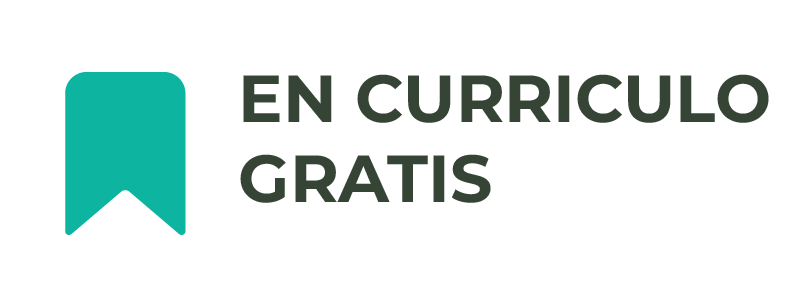Personal loans of $50,000 represent the upper tier of unsecured lending, requiring exceptional creditworthiness and substantial income verification to secure approval. These large personal loans serve borrowers with significant financial needs such as major debt consolidation, extensive home renovations, medical expenses, or other substantial costs that exceed the capacity of smaller loan amounts. Lenders approach $50,000 personal loans with heightened scrutiny, employing rigorous underwriting standards to evaluate borrowers’ ability to manage substantial monthly payments over extended repayment periods.
The market for large personal loans has expanded considerably, with specialized lenders recognizing the demand from high-income professionals and borrowers with excellent credit profiles. According to the Federal Reserve’s latest consumer lending data, personal loans exceeding $40,000 comprise approximately 8% of total originations but represent 18% of total dollar volume, indicating the significant market presence of larger loans. Experian’s consumer credit analysis shows that borrowers successfully obtaining $50,000 personal loans typically demonstrate credit scores above 720, annual incomes exceeding $75,000, and debt-to-income ratios below 30%, reflecting the premium borrower profile required for these substantial loan amounts.
Approval requirements for $50,000 personal loans are substantially more stringent than smaller amounts, with lenders implementing comprehensive evaluation processes to assess creditworthiness and repayment capacity. Most lenders require excellent credit scores (typically 720+), though some premium lenders may consider applicants with scores as low as 680 if other factors are exceptionally strong. The Consumer Financial Protection Bureau emphasizes that successful applicants typically demonstrate stable employment history spanning at least two years, consistent income growth, and minimal recent credit inquiries. Lenders also scrutinize existing debt obligations carefully, as the addition of a substantial monthly payment must fit comfortably within the borrower’s overall financial picture without creating payment strain.
$50,000 Loan Pre-Approval Assessment
Evaluate your qualification potential for $50,000 in 2 minutes – no credit impact
Check QualificationElite lenders specializing in large personal loans offer sophisticated products tailored to high-net-worth borrowers seeking maximum loan amounts. SoFi leads the market with loans up to $100,000, featuring no fees, unemployment protection, and comprehensive member benefits including financial planning services and career coaching. LightStream offers loans up to $100,000 with their acclaimed Rate Beat Program, providing rate guarantees and autopay discounts for qualified borrowers. Discover Personal Loans caps loans at $40,000 but offers competitive rates and no origination fees for established borrowers. Traditional banks like Wells Fargo and U.S. Bank provide relationship pricing and personalized service, though their maximum loan amounts may be limited compared to specialized online lenders.
Premium $50,000 Lender Comparison
Access exclusive rates and terms from top-tier lenders for large personal loans Compare
Compare Premium OptionsThe application process for $50,000 personal loans demands extensive documentation and financial verification to support the substantial loan request. Lenders require comprehensive income documentation including recent pay stubs, tax returns from the previous two years, W-2 forms, and detailed bank statements covering 90-120 days. High-income professionals may need to provide employment verification letters, bonus documentation, and investment account statements to demonstrate total financial capacity. Self-employed borrowers face the most rigorous requirements, typically needing profit and loss statements, business tax returns spanning multiple years, bank statements for both personal and business accounts, and often CPA-prepared financial statements to verify income stability and business viability.
Advanced lending platforms have developed sophisticated tools specifically designed for large personal loan applications and comparisons. Credible enables qualified borrowers to receive multiple rate quotes from premier lenders without credit score impact, while LendingTree connects applicants with lenders specializing in high-value personal loans. Innovative lenders like Upstart employ artificial intelligence and machine learning to evaluate borrowers beyond traditional credit metrics, considering education credentials, employment history, and income trajectory. Credit unions such as Navy Federal and Alliant Credit Union may offer competitive rates for qualifying members, though maximum loan amounts and membership requirements vary significantly across institutions.
Interest rates for $50,000 personal loans reflect both the substantial loan amount and the premium borrower profile typically required for approval. According to FICO’s rate analysis data, borrowers with exceptional credit (760+ FICO) typically secure rates between 6.99% and 13.99% APR from top-tier lenders, while those with excellent credit (720-759) generally receive rates ranging from 9.99% to 17.99%. Borrowers with good credit (680-719) may encounter rates of 14.99% to 24.99%, though many lenders impose minimum credit score requirements that exclude lower-tier borrowers from $50,000 loan consideration. TransUnion’s market research indicates that borrowers who compare offers from at least five lenders save an average of $4,200-$7,800 over the loan term compared to those accepting initial rate quotes.
Loan terms for $50,000 personal loans typically range from 36 to 84 months, with most borrowers selecting 60-84 month repayment periods to maintain manageable monthly payment obligations. A $50,000 loan at 11% APR over 60 months generates monthly payments of approximately $1,086 with total interest of $15,160, while extending to 84 months reduces payments to $826 but increases total interest to $19,384. Fee structures can significantly impact total borrowing costs, with origination fees ranging from 0% to 5% of the loan amount. Premium lenders like SoFi and LightStream eliminate all fees, while others may add $1,000-$2,500 to your total cost, making comprehensive fee analysis essential for accurate cost comparison and lender selection.
Preparing for a $50,000 personal loan application requires months of strategic financial optimization to meet lenders’ stringent qualification standards. Begin by monitoring credit reports from all three bureaus through AnnualCreditReport.com and addressing any inaccuracies or negative items that could impact credit scoring. Focus on maintaining credit utilization ratios below 10% across all credit cards, as this demonstrates superior credit management to underwriters evaluating large loan applications. Consider consolidating existing debts to improve debt-to-income ratios and demonstrate financial responsibility, while avoiding new credit applications for at least six months before applying to minimize credit inquiries.
Strategic timing and comprehensive preparation are essential for securing favorable terms on a $50,000 personal loan application. Apply when your financial profile demonstrates peak strength, including stable employment tenure, growing income trajectory, and minimal existing debt obligations. Submit applications to 3-5 premium lenders within a 14-day period to minimize credit score impact while ensuring thorough rate and term comparison. Prepare a detailed explanation of fund usage and repayment strategy, as lenders often require justification for large loan amounts. Remember that a $50,000 personal loan represents a significant long-term financial commitment requiring disciplined budgeting, consistent payment discipline, and careful financial planning to maintain credit health while achieving your substantial financial objectives successfully.





